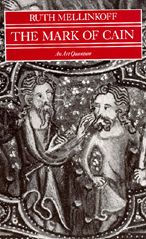

Hardcover(First Edition)
-
PICK UP IN STORECheck Availability at Nearby Stores
Available within 2 business hours
Related collections and offers
Overview

Product Details
| ISBN-13: | 9780520039698 |
|---|---|
| Publisher: | University of California Press |
| Publication date: | 01/29/1981 |
| Series: | Quantum Books , #20 |
| Edition description: | First Edition |
| Pages: | 128 |
| Product dimensions: | 5.50(w) x 8.50(h) x 0.70(d) |
About the Author
What People are Saying About This
"Before opening Ruth Mellinkoff's slim but fascinating volume, most readers would no doubt describe the mark of Cain as a sign placed by God on Cain's forehead as punishment for the murder of his brother Abel. The truth is much more elusive than this piece of common wisdom, however, and the search for it is supremely engaging.
Mellinkoff...concentrates on work produced in the period before the Protestant Reformation, but occasionally traces her subject into modern times, even into the twentieth century, in her effort to demonstrate the tenacity of certain peculiar interpretations of Cain's story.
On the level of historical scholarship, Mellinkoff's book cannot be faulted. Even in brief compass the author demonstrates her familiarity with all relevant exegetical traditions, Jewish and Christian, ancient, patristic, medieval, and modern. Beyond this, she takes notice in some of her most interesting pages of literary and artistic interpretations of Cain. Mellinkoff's blend of disciplines produces a savory stew."
Jerry H. Bentley
University of Hawaii
"Ruth Mellinkoff is an art historian who has done rather more, in this slim volume, than to expound the relationship between Scripture and imagination in the story of Cain and the mark God set on him. Her exposition is very skillful but has wider implications. It reminds us of the fascination of this legend, and of its extraordinary complexity.
This book does not claim to be a comprehensive or conclusive treatment of its subject: it is rather demonstrative and suggestive. In it however, Dr. Mellinkoff has found a theme, and expounded a thesis, that her colleagues will envy.
Nissim Rejwan
'The Jerusalem Post Magazine'
